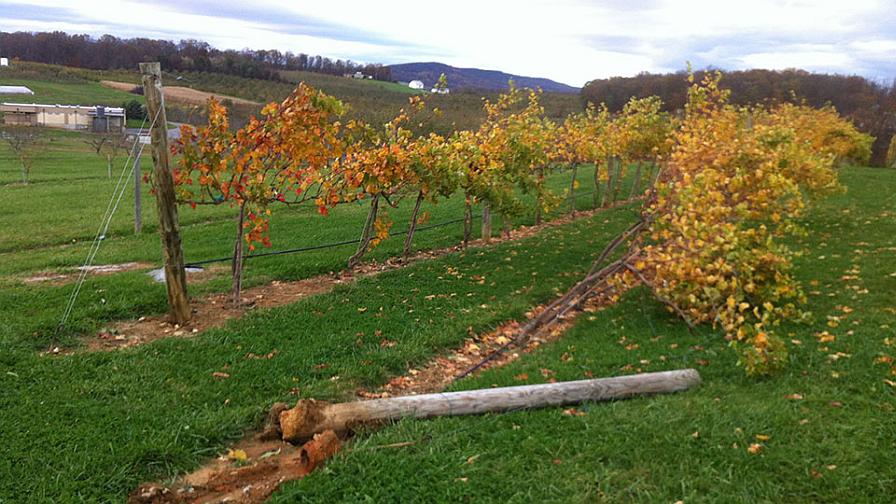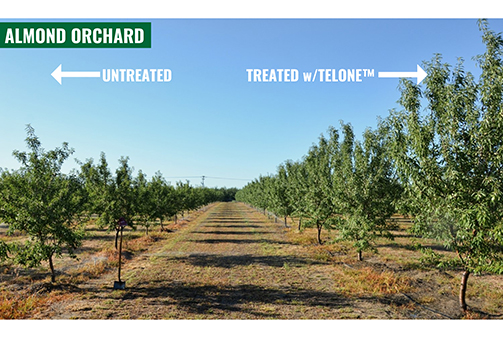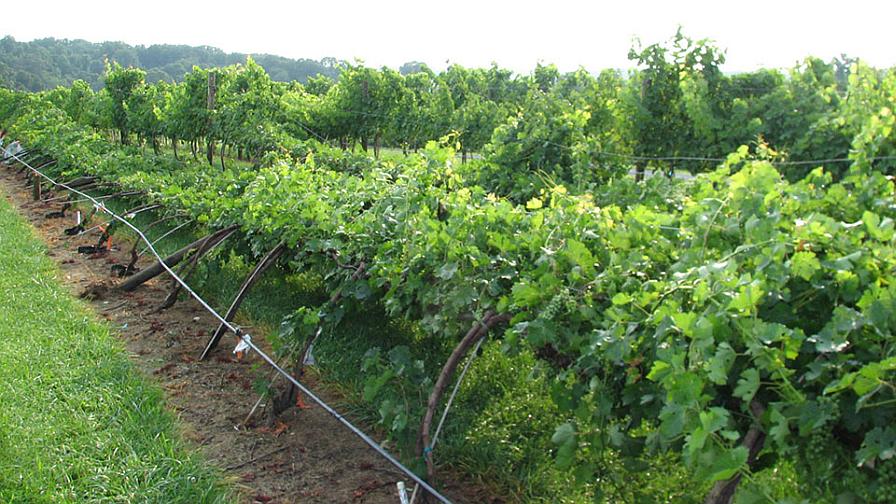Avoid Disaster: Install Your Grape Vineyard Right the First Time
It’s going to cost that much?! One can understand why you feel financial distress when installing new vineyards. A lot of capital goes into vineyard installation; in this situation, cutting costs can be appealing. However, experience goes a long way in knowing where costs can be cut vs. where money is well spent.
While these costs need to be paid or financed as they are incurred, it is helpful to think of the useful life associated with these costs. The photos on this page are examples of where an insufficient number of posts were used on a vineyard trellis, causing a massive failure in the first 10 years of the vineyard. Failed posts during the growing season require a lot of clever labor to repair. Replacing failed trellis structures is always more expensive than doing it right the first time.
Supply chain disruptions have added a layer of complexity to these recommendations. The required posts may not be available. What is one to do? Punt or pivot but please don’t settle for an inadequate long-term solution. Punt, in this case, is postponing the planting. If that is not an option, then pivot to a short-term solution. Neither of these are ideal, but these are extreme circumstances. Whatever you do, don’t install an inadequate, temporary solution and forget about it. Make sure to plan for a replacement or renovation.
Extreme weather conditions will increase the stress put on trellis components. It only takes an instance of extreme weather to find trellis limitations. The first image shows a trellis knocked over by strong, straight-line winds in 2009. The second shows a trellis end assembly that failed during Hurricane Sandy in 2012.

Failed trellis end-assembly courtesy of hurricane-force winds. Could proper vineyard installation prevent this? Photo by Tremain Hatch
Given our luck over the past couple of years, I would not bet on calm weather conditions without big storms over the next 20 years.
The same forethought goes a long way to integrate mechanization into a vineyard enterprise.
At a minimum, make sure the trellis is uniform and straight. It makes sense to talk to extension educators, equipment vendors, and other growers employing mechanization to gain information about lessons learned with trellis features and mechanization of different vineyard tasks.
We don’t need to face these obstacles alone. Talking to a neighboring farmer can double one’s perspective. Chatting about different vendors, delivery options, or even swapping horror stories can be as easy as waving down a neighbor on the road or posting to an online group.
One of the great benefits to our industry is that there are no production secrets. I can’t think of an industry member who would not be willing to answer some questions or brainstorm some solutions to supply chain snags. We don’t farm on an island; we can always bounce ideas off neighbors and extension folks or even hire consultants. Once you spend the money on materials, make sure they are then installed properly.
One of the pitfalls with new vineyard operations is that the entrepreneur typically has little experience with vineyards when designing his or her first vineyard. Especially in these days of labor crunches, a vineyard do-over is expensive and absurd. If you have questions, contact your local Extension office. Extension educators can provide research-based recommendations for trellis specifications.
As the old adage goes, there are no dumb questions. Taking time to ask a question may pay off in the long run. If you are a new grower and don’t have questions, you should share your plan with someone and ask what pitfalls they see. Sharing of information is a powerful tool that moves the industry forward.











